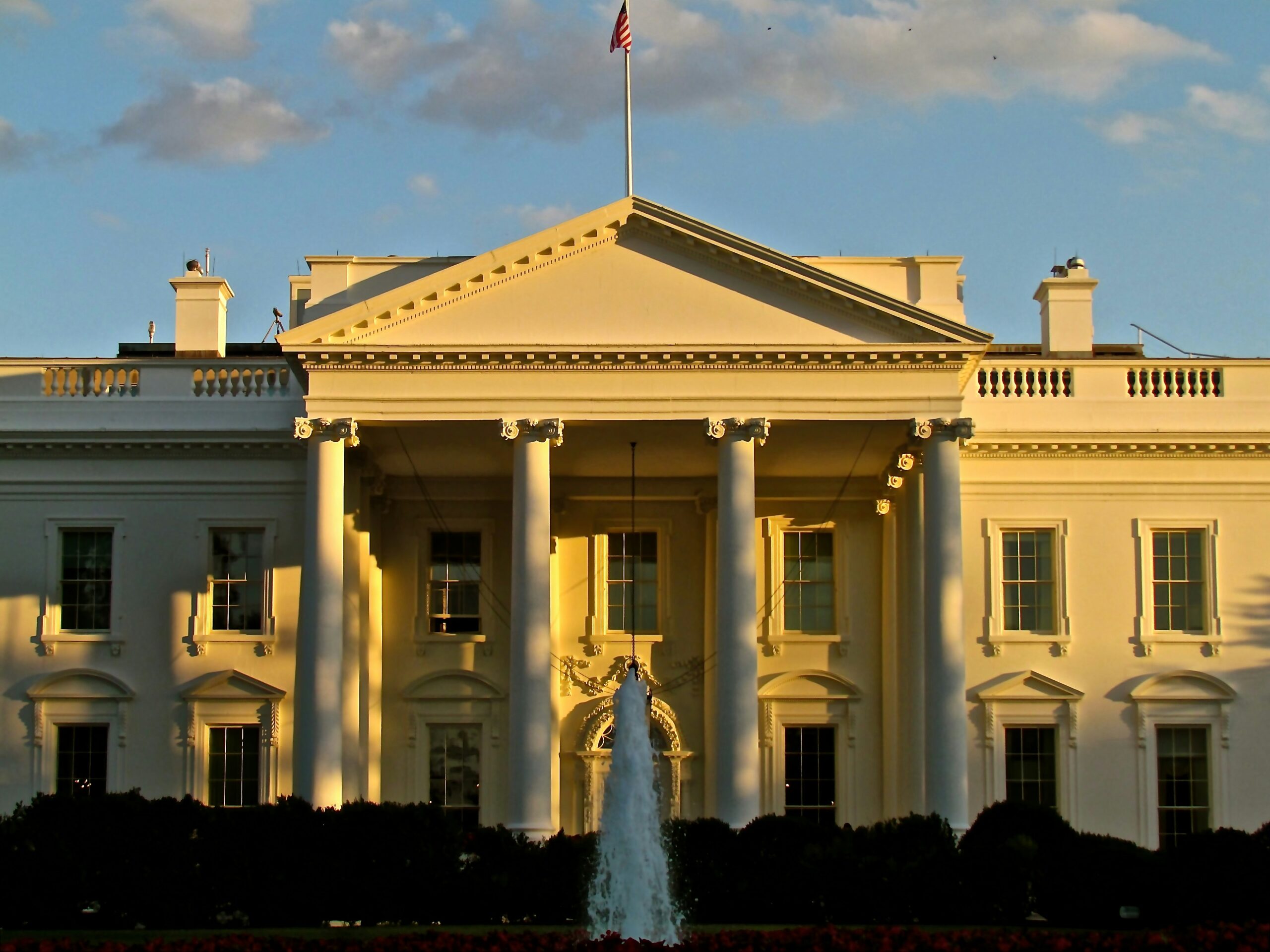In this unprecedented time, our state and federal governments have taken a series of actions which are designed to assist our country, families and businesses with the impact of mandated and strongly requested shuttering of schools, gatherings, bars, restaurants and businesses that are not providing essential goods and services. While we all understand the temporary nature of this country and world-wide shut down, there are some serious implications for businesses. Although I doubt we can provide a comprehensive list and summary of what you need to know as a business leader, especially when the information is changing daily if not more frequently, below is an outline of key items as of 9:00 am on March 20, 2020.
Families First Coronavirus Response Act: It has two different components – Emergency Paid Sick Leave and an Expansion to FMLA. Previously, FMLA was only applicable to employers with at least 50 employees, however, these changes impact all employers unless the Secretary of Labor uses rule making to make an exception. It is Effective on April 2, 2020 and expires on December 31, 2020.
- Emergency PAID Sick Leave Act
- This Act applies to ALL private employer with fewer than 500 employees and all government employers.
- The Secretary of Labor may issue for good cause and exemption for businesses with less than 50 employees but that has not yet been announced. We need to watch for that over the next days.
- The Secretary of Labor may also exempt certain first responders and healthcare providers as defined in FMLA.
- Leave Amount and Usage -This is special leave for Coronavirus related purpose and is not generally available unless a qualifying purpose.
- Covered full-time employees are entitled to 80 hours of paid leave.
- Part-time employees are entitled to the average number of hours the employee works during a two-week period.
- Covered employees are only entitled to this paid leave for specified purposes related to coronavirus.
- Employers must provide paid sick leave if the employee is unable to work or telework because the employee:
- Is under a federal, state, or local quarantine or isolation order related to COVID-19.
- Has been advised by a health care provider to self-quarantine because of COVID-19 concerns.
- Is experiencing COVID-19 symptoms and seeking a medical diagnosis.
- Is caring for an individual subject to a quarantine or isolation order or advised to self-quarantine because of COVID-19 concerns.
- Is caring for a son or daughter (as defined in the FMLA) where, due to COVID-19 precautions, the child’s:
- school or place of care has been closed; or
- child care provider is unavailable.
- Is experiencing any other substantially similar condition specified by the Secretary of Health and Human Services in consultation with the Secretary of the Treasury and the Secretary of Labor.
- Leave is available for immediate use, regardless of how long the individual has been employed by the employer.
- Employers cannot require that employees:
- Use other available paid or unpaid leave before allowing paid leave available under this emergency provision.
- Find a replacement to cover the employee’s hours or shift before allowing paid leave.
- After the first use of leave, employers may require the employee to follow reasonable notice procedures in order to continue receiving paid sick time.
- Unused leave cannot be carried over to the following year.
- Payment for Leave
- Leave is paid at the employee’s regular rate of pay, except that leave used to care for another is paid at two-thirds the employee’s regular rate of pay. Paid leave is capped at:
- $511 per day and $5,110 in total for the employee’s own health condition or quarantine.
- $200 per day and $2,000 in total for leave necessitated to care for another individual.
- Private employers can claim a tax credit against the employer’s portion of Social Security taxes for the emergency paid sick leave wages paid to employees, subject to the same per employee caps depending on the reason for the leave. Please discuss this with your accountant or payroll servicer.
- Leave is paid at the employee’s regular rate of pay, except that leave used to care for another is paid at two-thirds the employee’s regular rate of pay. Paid leave is capped at:
- Notice, Remedies, and Other Provisions
- Employers must post a notice regarding employees’ rights under the emergency law (to be made available by the Secretary of Labor). The law prohibits retaliation against employees who use emergency paid sick leave or complain about violations of the Emergency PSL Act. Please contact us if you would like to be on the NOTICE Language Distribution List.
- Failure to comply with the Emergency PSL Act constitutes a failure to pay minimum wages in violation of the FLSA.
- The law expressly states that it does not diminish any employee rights under an existing law, employer policy, or CBA. While this suggests that employers with existing paid leave policies must provide leave under the Emergency PSL Act in addition to leave already provided, explicit language to this effect was deleted from prior version of the bill.
- Emergency Family and Medical Leave Expansion Act
- The Emergency Family and Medical Leave Expansion Act (Emergency FMLA) expands the FMLA to provide paid and other protected leave to covered employees with a qualifying need related to a public health emergency regarding COVID-19 declared by a federal, state, or local authority. The Emergency FMLA broadens coverage of the FMLA in several key respects. If you have been operating with less than 50 employees, you will need to read this and consider how to implement since previously FMLA may not have been on your radar. It is important to contact us if you have questions about implementation and FMLA is new to your business.
- Scope of Coverage
- The new law expands the definition of employer regarding public health emergency leave to include all employers with fewer than 500 employees, while the FMLA ordinarily only covers employers with 50 or more employees. However, for employers with fewer than 50 employees:
- The Secretary of Labor is authorized for good cause to exempt them from providing public health emergency leave if it would jeopardize the viability of the business as a going concern.
- There is no private right of action for damages or attorneys’ fees available against those employers that do not meet the definition of covered employer under the FMLA (though the Secretary of Labor retains all available enforcement rights and remedies under the FMLA) (H.R. 6201, § 3104).
- The Emergency FMLA also expands coverage by including employees who been employed by the employer for at least 30 days. Under the FMLA, covered employees must have been employed for at least 12 months by the employer and worked for at least 1,250 hours during the previous 12 months.
- The new law expands the definition of employer regarding public health emergency leave to include all employers with fewer than 500 employees, while the FMLA ordinarily only covers employers with 50 or more employees. However, for employers with fewer than 50 employees:
- Leave Use and Payment
- The Emergency FMLA amends the FMLA to create a new category of protected leave for employees with a “qualifying need related to a public health emergency” (H.R. 6201, § 3102(b), adding a new section (F) to 29 U.S.C. § 2612(a)(1)). A qualifying need under this provision means the employee cannot work or telework due to the need to care for a son or daughter under 18 years of age if, because of a public health emergency regarding COVID-19, the child’s:
- School or place or care has been closed.
- Child care provider is unavailable.
- Under the Emergency FMLA, the first ten days of leave necessitated by a public health emergency related to COVID-19 is unpaid. An employee may elect to substitute accrued paid leave during that time period under the leave provisions of the FMLA (29 U.S.C. § 2612(d)(2)(A) (allowing an employer to require an employee to use other accrued paid leave during FMLA leave)).
- Leave after the first ten days must be paid at a rate at least two-thirds the employee’s regular rate of pay based on the employee’s regular schedule. For each employee, paid leave cannot exceed:
- $200 per day.
- $10,000 in total.
- Private employers can claim a tax credit against payroll taxes for the Emergency FMLA wages paid to employees, subject to the employee caps on total paid leave (H.R. 6201, § 7003).
- Because the Emergency FMLA adds another category of qualifying need to the FMLA, the total amount of available leave is the same as under the FMLA (12 weeks in a 12-month period). Under the Emergency FMLA, the first two weeks are unpaid and the remaining ten weeks are paid leave. Employees must provide notice to their employers as soon as practicable when the need for leave is foreseeable.
- The Emergency FMLA amends the FMLA to create a new category of protected leave for employees with a “qualifying need related to a public health emergency” (H.R. 6201, § 3102(b), adding a new section (F) to 29 U.S.C. § 2612(a)(1)). A qualifying need under this provision means the employee cannot work or telework due to the need to care for a son or daughter under 18 years of age if, because of a public health emergency regarding COVID-19, the child’s:
- Restoration Rights
- Employees returning from FMLA leave generally have the right to return to the same or an equivalent position. The Emergency FMLA contains an exception to the job restoration right for employers with fewer than 25 employees when their employees take public health emergency leave if all the following conditions are met:
- The employee’s position no longer exists because of economic or other operating conditions affecting employment and caused by a public health emergency.
- The employer makes reasonable efforts to return the employee to an equivalent position.
- If unable to return the employee to an equivalent position, the employer makes reasonable efforts to contact the employee about available equivalent positions for one year beginning on the earlier of:
- the end of the employee’s qualifying need; or
- 12 weeks after the employee’s leave began.
- Employees returning from FMLA leave generally have the right to return to the same or an equivalent position. The Emergency FMLA contains an exception to the job restoration right for employers with fewer than 25 employees when their employees take public health emergency leave if all the following conditions are met:
State and Local Responsibilities: Many states have their own paid and unpaid sick and emergency leave acts. States like Florida and Missouri tend to follow federal law while states like California, Massachusetts and Minnesota have enacted state and often local laws and rules on leave. Because of the breadth of client locations, we are recommending you reach out to your AEGIS lawyer and we can help you navigate state and local rules.
Relief Opportunities: SBA: The Small Business Administration has announced new loans which are available for qualifying small businesses. These loans are designated for the states and territories as low-interest for working capital to small businesses suffering substantial economic injury as a result of COVID19. The Governor of the State needs to activate the process and the loans will then be made available to small businesses and private, non-profit organizations to help alleviate economic injury.[1] The SBA’s Economic Injury Disaster Loans offer up to $2 million in assistance and can provide vital economic support to small businesses to help overcome temporary loss of revenue. These loans may be used to pay fixed debts, payroll, accounts payable and other bills that can’t be paid because of the disaster’s impact. The interest rate is 3.75% for small businesses. The interest rate for non-profits is 2.75%. SBA offers loans with long-term repayments in order to keep payments affordable, up to a maximum of 30 years. Terms are determined on a case-by-case basis, based upon each borrower’s ability to repay. For questions, please contact the SBA disaster assistance customer service center at 1-800-659-2955 (TTY: 1-800-877-8339) or e-mail disastercustomerservice@sba.gov.
Relief Opportunities: State activated funds. Many states have activated small business bridge loans and other resources bridge the gap.
The Florida Small Business Emergency Bridge Loan Program is currently available to small business owners located in all Florida counties statewide that experienced economic damage as a result of COVID-19. These are short-term, interest-free working capital loans are intended to “bridge the gap” between the time a major catastrophe hits and when a business has secured longer term recovery resources, such as sufficient profits from a revived business, receipt of payments on insurance claims or federal disaster assistance. Florida Small Business Emergency Bridge Loans require repayment by the approved applicant from longer term financial resources. All qualified applicants must have been established prior to March 9, 2020, and suffered economic injury as a result of the designated disaster. Qualified small business applicants must be an employer business with 2 to 100 employees. Amount: Up to $50,000 per eligible small business. Loans of up to $100,000 may be made in special cases as warranted by the need of the eligible small business. Term: 1 year. You can apply online. Contact Information: For questions regarding the Emergency Bridge Loan Program, please contact the Florida Small Business Development Center (SBDC) Network Headquarters. Email: Disaster@FloridaSBDC.org. Phone toll-free: (866) 737-7232.
Missouri – Governor Parsons announced he plans to the use the SBA Economic Injury Disaster Loan Program described above. He will be activating that system, according to news sources.
This is a short summary of available assistance. It is a very fluid situation and information is streaming in. If you need help, just give us a call.
[1] Areas eligible for SBA disaster loans:
Arizona, California, Colorado, Connecticut, Delaware, District of Columbia, Florida [Contiguous Counties: ALABAMA – Baldwin, Covington, Escambia, Geneva, Houston], Georgia [Contiguous Counties: ALABAMA – Barbour, Chambers, Cherokee, Cleburne, De Kalb, Henry, Houston, Jackson, Lee, Randolph, Russell], Indiana [Contiguous Counties: ILLINOIS – Clark, Cook, Crawford, Edgar, Gallatin, Iroquois, Kankakee, Lawrence, Vermilion, Wabash, White, Will; KENTUCKY – Boone, Breckinridge, Carroll, Daviess, Gallatin, Hancock, Hardin, Henderson, Jefferson, Meade, Oldham, Trimble, Union], Louisiana [Contiguous Counties: ARKANSAS -Ashley, Chicot, Columbia, Lafayette, Miller, Union; MISSISSIPPI- Adams, Amite, Claiborne, Hancock, Issaquena, Jefferson, Marion, Pearl River, Pike, Walthall, Warren, Wilkinson; TEXAS – Cass, Harrison, Jefferson, Marion, Newton, Orange, Panola, Sabine, Shelby], Maine, Maryland, Massachusetts [Contiguous Counties: VERMONT – Bennington, Windham], Michigan [Contiguous Counties: WISCONSIN – Florence, Forest, Iron, Marinette, Vilas], Montana [Contiguous Counties: IDAHO – Clearwater, Fremont, Idaho; NORTH DAKOTA – Divide, Williams; WYOMING – Park, Teton], Nevada [Contiguous Counties: ARIZONA – Mohave; IDAHO – Cassia, Owyhee, Twin Falls; OREGON – Harney, Lake], New Hampshire [Contiguous Counties: VERMONT – Caledonia, Essex, Orange, Windham, Windsor], New Jersey, New Mexico [Contiguous Counties: TEXAS – Andrews, Cochran, Deaf Smith, El Paso, Gaines, Hartley, Loving, Oldham, Winkler, Yoakum], New York [Contiguous Counties: VERMONT- Addison, Bennington, Chittenden, Grand Isle, Rutland], North Carolina, Ohio [Contiguous Counties: KENTUCKY- Boone, Boyd, Bracken, Campbell, Greenup, Kenton, Lewis, Mason, Pendleton], Pennsylvania ,Rhode Island, South Carolina, Tennessee, Utah [Contiguous Counties: WYOMING – Sweetwater, Uinta], Virginia [Contiguous Counties: KENTUCKY- Boyd, Lawrence, Martin, Pike],Washington [Contiguous Counties: IDAHO – Benewah, Latah, Nez Perce; OREGON – Gilliam, Hood River, Morrow, Sherman, Umatilla, Wasco], West Virginia [Contiguous Counties: KENTUCKY – Boyd, Lawrence, Martin, Pike].




